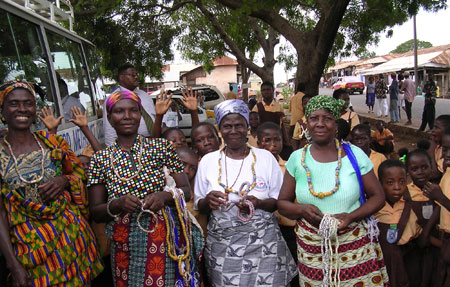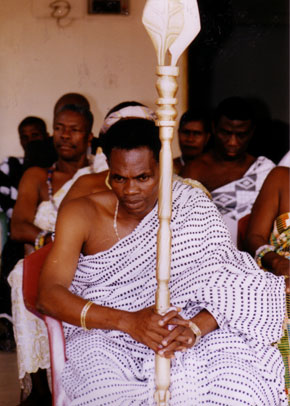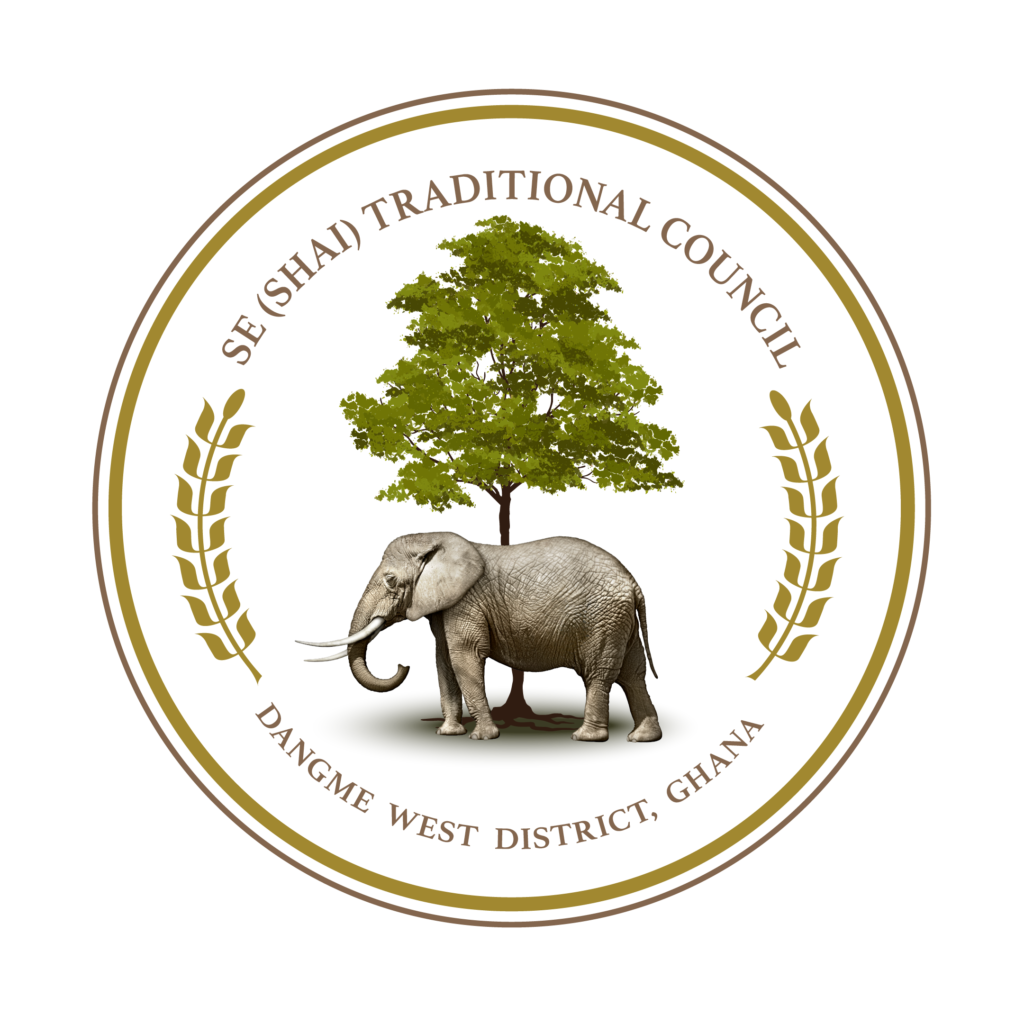The history of the Se people is a fascinating story of perseverance and resilience. The Se is part of a larger group of people known as the Ga-Dangme. The Ga-Dangme settled in the Accra plains, which include the capital of Ghana. The Ga-Dangme now occupy the Greater Accra Region of Ghana and are made up of the Se, Klo, Ningo, Kpong, Osu, Krobo, Gbugla, Ada and Ga.
Oral history documents that the Ga-Dangmes [Se, Klo, Ada, Osudoku, Gbugla (Prampram) and Ningo] migrated from Israel through Egypt and Southern Sudan, settling for a period of time at Simeh in Niger and then at Ileife in Nigeria. In the year 1100 A.D. they migrated again to Dahomey, Togo and later settled in Huatsi, where they stayed for a short time.
From Huatsi, they traveled to the eastern banks of the River Volta, originally named Jor. They managed to cross the Volta at a place between Old Kpon and Akuse, establishing settlements on the plains of Tag-logo, where they remained until 1200 A.D. They later migrated to the plains of Lorlorvor, between the Lorlorvor and Osudoku Hills.
Archaeological research at the ancient site of Se has shown that their settlement was already in existence by AD 1300 and that it had expanded into large townships by the 1500s. The Se witnessed tremendous prosperity and expansion during the 16th and 17th centuries, primarily due to coastal trade with Europeans.

The Se kingdom continued to flourish in the secluded Se (Shai) highland fortress until the end of the 19th century. A number of Basel Missionaries who visited the Se (Shai) hills recorded eyewitness accounts on the government, culture, architecture, and pottery traditions of the locals. One missionary who visited Se (Shai) in 1853 recorded in his diary, “The Shai people are well-known potters and as one who knows something of pottery making, I was astonished how they make pots, as beautifully round as if they were turned on a potter’s wheel”.
It is in the area of herbal medicine, however, that the historic Dangme have left a most important legacy for Ghana as well as the world. According to archival records of the late 18th century, two Danish scientists, Paul Isert and Peter Thonning, researched Shai ethnomedicine. They collected some 2000 plant specimens, which were sent to Professor Martin Vaal of the Botany Faculty at Copenhagen University. Annotated samples were distributed to herbaria throughout the world such as Britain, Denmark, France, Holland, Germany and Russia. Many of the wild and cultivated medicinal and nutritional plants collected and studied by Isert and Thonning from the Se in the Accra plains are still well-known and used by present day herbalists and nutritionists.

During the 18th century and the first half of the 19th century, the Government of Denmark, operating from Christiansborg Castle, exercised a loosely-defined “Protectorate” over most of the territories of Ga, Dangme and Ewe principalities of southeastern Ghana. In March of 1850, Denmark sold its possessions to Britain and left the Gold Coast. The Danish Governor, Carstensen, and the British Governor, W. Winniett, together journeyed to the royal courts such as Se, Prampram, Krobo, Akuapem, and Auna for the purpose of arranging the “transfer” of the different ethnic groups to their new colonial governor, Britain. The change of colonial lordship did not bode well for the Dangme. Near the end of the 19th century, the relative peace and prosperity which the Se had enjoyed in their highland Kingdom came to an abrupt end.
In 1892, allegations reached the British Administration that the Se (Shai), Krobo and Osudoku people living in the hills were offering human sacrifices to their gods – Kotoklo, Korle, Sabu and Nadu – and were sacrificing strangers for annual propitiatory rites. The British Governor, Griffith, sent a Regiment of colonial troops to the Krobo, Se (Shai), and Osudoku hills. The Dangmes were driven from their hill settlements in 1892. All the kings of the Se (Shai), Krobo (Yilo, Manya) and Osudoku people had to seek shelter in their farming villages spread all over the plains. The forced displacement of these ethnic groups had a significant effect upon them, from which they are still recovering.
In Seland (Shailand), the general populace was scattered in the plains west of the Se (Shai) hills where they had farms. Over the next two years, some regrouped and founded a number of villages and townships that subsequently became the new Se (Shai) – Dodowa, Agomeda, Kodiabe, Doryumu, Ayikuma and Jopanya. Dodowa became a seat of government for colonial powers. The Se (Shai) played a significant role in the development of cocoa as the Gold Coast’s leading and most highly profitable commodity. Many Se (Shai) people migrated to work as farmers on palm and cocoa plantations in various regions throughout the country and were able to accumulate capital for the purchase of their own lands in diverse territories. The Se (Shai) can currently be found in over 160 townships throughout the nation.
